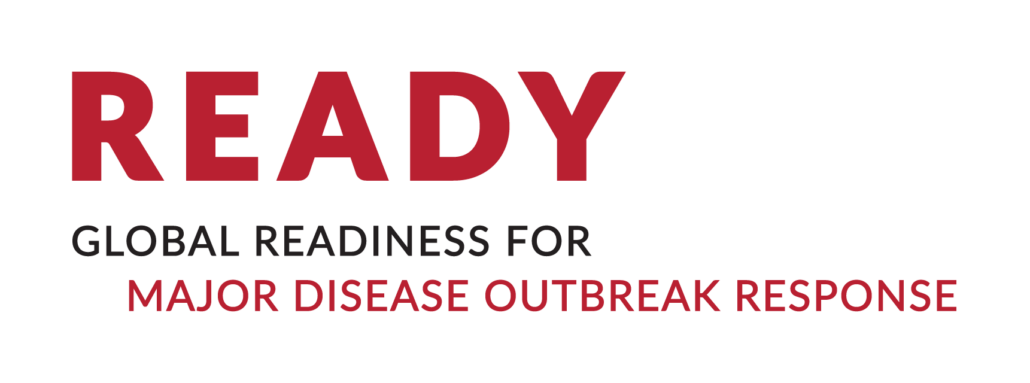Why did READY Create These Simulations?
We created the Outbreak READY! Digital Readiness and Response Simulations to strengthen the operational and health technical readiness of non-governmental organizations (NGOs) to respond to large-scale infectious disease outbreaks in humanitarian contexts. Through unique, digital interpretations of an outbreak simulation, READY brings the complex nature of a humanitarian outbreak response to life utilizing a computer-based serious game that allows participants to test and refine their outbreak readiness skills and knowledge.
The simulations follow evolving outbreaks from the first detection of a disease to its spread throughout the population and are designed for humanitarian practitioners working for national and international NGOs responding to outbreaks in humanitarian settings. In both simulations, players take the role of a team member for a medium-sized, international NGO named READY. The NGO operates in Thisland, a fictitious, low-income country that has experienced recent civil conflict and mass displacement.
Learning Objectives
Outbreak READY!
- Describe the key areas of operational readiness when preparing for an infectious disease outbreak in humanitarian settings and weigh how investments and trade-offs in operational readiness impact outbreak response outcomes.
- Identify key stakeholders and coordination structures that are critical to outbreak response in humanitarian settings and weigh their impact on multi-sectoral outbreak response activities.
- Explain the roles of various technical and cross-cutting sectors within infectious disease outbreak preparedness and response, and design activities that integrate multiple sectors in an outbreak response.
- Use epidemiological, assessment, and community feedback data to inform and develop organizational adaptive management strategies and response plans for inclusive and ethical outbreak responses in humanitarian emergencies.
Outbreak READY 2!: Thisland in Crisis
- Applied epidemiology for clinical and public health response: Implementing and coordinating a data-driven health response to an evolving infectious disease outbreak.
- Effective communication and community engagement: Developing and implementing an RCCE strategy using a data-driven approach.
- Humanitarian leadership: Minimizing risks and vulnerabilities to crisis-affected people, staff, and partners throughout an outbreak response.
Acknowledgments
Outbreak READY! and Outbreak READY 2!: Thisland in Crisis were developed by the READY initiative. We would like to thank the Johns Hopkins Center for Humanitarian Health for its leadership in the development of both simulations. Additional acknowledgments and thanks are on the landing pages for each simulation.




